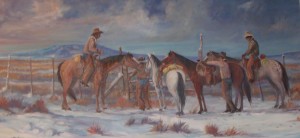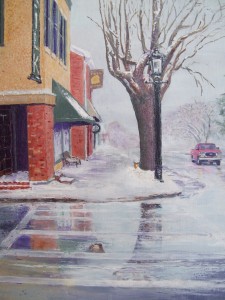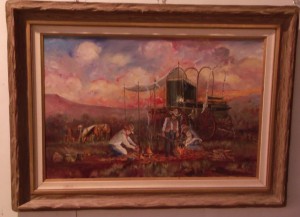
Most people like sunny, cloudless days, but when it comes to painting, artists prefer the soft illumination of an overcast light diffused through a cloud covered sky. It is nature at her most benign. Under this gentle quality of overcast light, almost anything can be painted. Unlike direct sunlight, for example, which is really beyond the range of anybody’s palette.

Overcast light is the most ideal for complicated outdoor scenes, because it allows for you to paint forms in their true colors without dramatic contrasts of light and shade.
In the painting to the right, the colors appear brighter and purer than they would in direct sunlight. The sky is light gray and, except for the lighter part of the snow, is the lightest portion of the painting.
For artists painting alla prima, overcast light is ideal because the light doesn’t change that much throughout the day. Its stability allows you to work four or five hours without the light changing too much.
Another advantage of an overcast is there is no definite light direction. The sun can travel for hours above the overcast with no discernible change in the landscape.

Finally, A painting done under overcast will look correct under any illumination. The diffused light actually helps you judge color in the same way the north light does in the studio. This happens because overcast is relatively cool and cool light creates relationships in color temperature that works to help mix your colors. In a sense, the light and the paint work together to help the mixing of colors.
